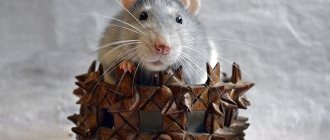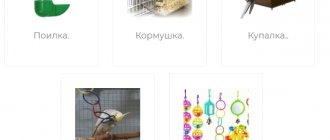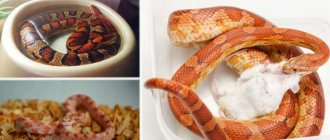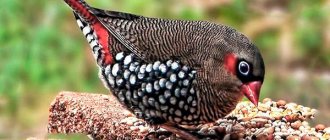Man has long shown concern for his smaller brothers. Recently, it has become fashionable to keep a four-legged friend or a winged pet in your home or apartment. This is exactly what a person cut off from nature lacks. Communication with pets brings a lot of pleasure, and children get involved in caring for them. Pets, in turn, respond to such care by becoming attached to their owner and family members.
Many keep decorative rats, which are considered quite intelligent and affectionate pets. Before you bring this charming rodent into your home, it is better to learn more about these animals, especially in terms of care and maintenance. It is believed that the level of intelligence of this rodent is not inferior to many species of dogs or cats.
Why have a rat at home?
Keeping and caring for a pet rodent does not require any special effort or expenditure of time and money. These small animals are easy to train. Like domestic cats or dogs, they happily greet their owner. They trust their owner completely, as well as the rest of the family, including children.
It should be noted that these animals themselves choose their favorites among the family. Most likely, those who pay the most attention to animals become such favorites. The more often someone picks them up, the faster the animal gets used to it and considers it its owner. At the same time, the animals give all their love and affection, paying tribute to the same love and affection that a person surrounds their pets with.
Rodent character
Those who have never met a rat face to face before can argue that rodents have a bad character. And only the owners of tailed sneaks can say with confidence: this is a loyal and intelligent pet . In terms of intelligence, ornamental rodents are compared to dogs. And for good reason: these are very smart animals.
Each of the domestic rats has a special temperament. You will never meet two identical eared ones. There are homebodies who like to sit in a cage and sleep all day long. Travelers also meet: do not feed such a pet bread, let him walk around the apartment. There are also “revolutionaries”: when they get free (on the carpet, for example), they strive to turn everything in their own way, steal small objects and carry trinkets from place to place.
The rat is an animal that can smile sincerely . Of course, its smile bears little resemblance to a human’s, but scientists have proven that by showing its lower teeth, the rodent expresses its joy at meeting you.
It is also curious that rodents readily respond to their own name. If a mouse gets lost in the bowels of the apartment, you don’t have to rummage through all the closets in search of it (as, for example, in the case of a selfish hamster). Calling the tailed one by name, you will immediately see its ubiquitous face. After all, communication with your beloved owner is more important than any intrigues.
And rats love to communicate . For her, there is nothing so much adored as “her” person. The rat will choose as its “own” the one who will pay it the most attention. She won’t offend the rest of the family, but she won’t give her a championship medal either.
By the way, adult pets treat strangers with caution. You may not recognize your polite mustachioed friend when he grabs the finger of a curious guest. Rats are terribly loyal and devoted, and in the event of a change of owner they do not even try to get used to a new person, often remaining an “abandoned loner” until their death.
Care and maintenance of domestic rats.
When examining a rat's character, the future owner can be given some advice:
- When buying a pet, be prepared to interact with it daily. Communication involves contact, play and hand feeding. This is the only way your “mouse” will be happy. Let your pet sit on your shoulder, lightly tease you, and steal small trinkets from you.
- Introduce your pet to all family members right away so that there are no misunderstandings later.
- Give your rat a name and speak to it often. The smart rodent remembers not only some words, but also perfectly captures the mood by the intonation of its voice.
- Equip the “hole” according to all the rules (they will be described below). This way you will avoid the animal’s constant attempts to escape from the cage. A rat, in love with its home, will happily return there after a walk.
- As you already understand, walks are mandatory for a rodent. Of course, you don't have to take your rat to the park. It is enough to let her out of the cage once a day. If you have a female, then it is not recommended to leave her unattended. The girls are very homely and their whole life consists of trying to “build” a nest. The material for the kennel will be your personal belongings, so keep a close eye on your pet if you are not ready to sacrifice socks as building material.
A little history
Cute, affectionate and tame decorative rats are descended from ordinary wild gray rats, which cause a feeling of disgust in humans, as well as a certain fear. This is not at all surprising, since wild rats have gained notoriety not only for their behavior, but also for their ability to spread various viruses and infections.
The Chinese and Indians first became aware of wild rats several thousand years ago. In the 16th century, as maritime trade developed, rats spread throughout the world, moving from continent to continent. In the 19th century in England, these rodents began to be used in battles against dogs, after catching them. During the same period, some hobbyists began breeding rats, especially tame, white ones. Such tame rodents were shown at exhibitions; in addition, white rats took part in circus performances. Some pet lovers started keeping rodents in their homes because they did not pose any danger to humans.
Some of the individuals were used as experimental animals in various laboratories, which is still practiced today, and some of them moved into the homes of scientists. Scientists saw in rats animals that are quite intelligent and attached to humans. Thanks to the crossing of laboratory rats with wild animals, new species and breeds of domestic decorative rodents have appeared, which can still be found among various breeders.
How to care for a rat - hygiene and bathing
Rats are clean animals and can take care of themselves on their own. Therefore, they are bathed only if necessary: in the presence of strong dirt, odor, or before participating in an exhibition.
The older the rodent, the more difficult it is for him to care for himself. During this period, hygiene procedures must be carried out by the owner, for example, he must cut the rat’s claws.
They bathe the pet using special products in a calm environment. Animals react differently to water, so the owner should study the individual characteristics of the animal.
First, you can lightly wet the fur, avoiding getting water into the ears, and see how the rat behaves. If the pet is worried, use a small amount of water for bathing.
The following recommendations will help ensure a safe procedure:
- maintaining optimal temperature conditions in the room;
- if the pet resists bathing, water procedures are carried out only if absolutely necessary;
- To avoid damaging the rodent's skin, use a soft sponge.
Rat as a pet: advantages
Many people prefer pet rats as this is an ideal option. Despite the fact that for many people the mere mention of rats causes an ambiguous reaction, when they pick up this cute creature they instantly change their attitude. This is not at all surprising, since decorative and domestic rats are two very different things. As a result of training, these animals are able to master various tricks that make both children and adults admire them.
Caring for a pet is quite simple, since it requires a spacious cage, litter, water and cheap food. If you think of a domestic rat as a dirty and infectious rodent, then this is a huge mistake, since the decorative rodent is considered a very clean animal. If you clean the animal’s cage in a timely manner, then there can be no talk of any smell. The rat itself chooses one of the corners to relieve itself. If for some reason a bowl of food ends up near this place, then the rat drags it with its teeth to a clean place, away from this corner.
This rodent's need for communication is quite high. One should take into account the fact that each animal is an individual, with its own needs and character. It is very important to understand this in time. The domestic rat quickly remembers voices and smells, responding to its name. If you have training skills, you can train your rat to fetch small objects.
This cheerful living creature often plays for hours with children and adults, which lifts the spirits of all family members, forgetting about pressing problems. They feel great in human hands and squeak with pleasure when their belly, back and ears are stroked. These are animals that easily relieve the stress of any person who feels some kind of oppression from work or other everyday worries. Keeping such animals at home gives a person extremely positive emotions, the level of which determines a person’s psycho-emotional state.
Decorative Rat - All about the type of rodent | Type of rodent – Decorative Rat
Litter for rats: which one is better?
The absence of “aroma” from a cage with rats is an important condition that allows you to calmly enjoy communication with your pets. Rat urine has a strong, unpleasant odor, and feces don't smell like roses either.
To prevent animals from getting dirty in their own excrement and to reduce unpleasant fumes, filler is used. You will have to select it through your own experiments, depending on the characteristics of your pets, cage and personal preferences. The main condition is that it must be safe for rats.
Paper fillers
In my time, rats lived without any fuss - on a thick layer of newspapers. The newspaper was replaced daily, which effectively controlled the odor. Nowadays it is not recommended to use newspapers due to the possible toxicity of the paint.
White paper napkins and towels would make great fillers, but they are too expensive. Rats drag the soft material into the houses and quickly chew it into small pieces. Paper napkins are warm, soft, not dusty. They do not cause allergies, respiratory problems, and do not damage the eyes and paws. They are used to furnish a maternity hospital.
An excellent everyday option is industrial paper (cellulose) filler. It is safe for the health of rodents and they really like it. It can be flushed down the toilet. No cons found. However, experienced owners say that if there are a lot of rats, an unpleasant smell appears quite quickly.
Wood fillers
The most common litter for rats is sawdust. He is also the most harmful.
Disadvantages of sawdust:
- Dusty (cause inflammation of the eyes and respiratory tract);
- Pine sawdust irritates the respiratory tract due to essential oils.
The sawdust on the right (My Beast) is supposedly completely safe. But they are made of coniferous trees! The sawdust on the left (Triol) is deciduous.
Only sawdust from deciduous trees can be used and only if it is out of reach of rats (false bottom in a cage). But with this option, it is more convenient to use granular filler (pellets), which are cheap and effectively absorb moisture and odor. Wood pellets are not placed in the cage.
Only large shavings can be placed directly into the cage, since they do not generate dust.
Rats on a bed of shavings
Some rat breeders also use wood chips. You can buy it in a hypermarket or hardware store under the name “chips for smoking.” For smoking, hardwood trees are always used - alder, oak, cherry, beech. This is important for rats, many of which have a respiratory reaction to coniferous trees.
Corn filler
Fillers made from the core of corn cobs are quite good. Their advantages:
- Eliminates unpleasant odors well and absorbs liquid;
- Never causes respiratory diseases;
- Even if the rats eat the litter, it will not harm them.
The only caveat: if the corn filler is granular, you cannot put it directly into the cage. Hard granules damage rats' paws.
Prohibited litter for rats:
- Hay or straw;
- Flavored fillers;
- Bentonite clay;
- Silica gel;
- Office paper;
- Newspapers magazines.
Types of decorative rats with photos
There are several breed types of decorative rats, which people take great pleasure in keeping in their homes, to the delight of their relatives.
Standard
The most common breed of decorative rats, which is the ancestor of other varieties. It is distinguished by a compacted and elongated body, smooth coat, wide ears and a long tail covered with sparse hairs.
Dumbo
It has a cute and unique appearance. Due to the presence of relatively large and protruding ears, the rodent's muzzle has a very funny appearance. The little rat got its name because of these protruding ears, which are very similar to the ears of the eponymous baby elephant Dumbo, invented by Disney directors.
Rex
An equally popular variety of domestic rodent. A characteristic feature of the animal is that this rat has wavy fur. Because of this feature, the animal looks more like a living plush toy.
Sphinx
The breed can truly be considered unique, since the animal has no fur, with the exception of rare hairs covering the upper part of the body. Rodents have folded skin of a pale pink hue, which gives the animal some tenderness, although this breed is more for lovers and not everyone is ready to keep this animal at home. On the other hand, this is an excellent option for those who suffer from allergies.
Satin
This breed is very popular among owners in European countries. It is distinguished by a unique, shiny, satin-like coat. This uniqueness is the determining factor that contributes to the great demand for the animal.
Tailless
This rodent lacks a tail, which is how the rodent got its name. The animal has a pear-shaped body. With all this, these factors do not negatively affect the popularity of this breed.
Types of decorative rats | Pet rats
Breeds of decorative rats
Let's take a look at the main varieties of pet rats to make it easier for you to choose. Decorative rats are divided into:
- By physique
- By wool type
- By color
Division by body type
rats . The name was given because of its resemblance to Disney's baby elephant Dumbo, who could fly by waving his huge ears. Dumbo the rat's ears aren't that big, but they stand out. Rounded, sticking out more to the sides than to the top, like the others.
What are you watching? Quite an average size!
Standard . There’s nothing even to add to the name of the breed – a standard rat.
Standard? Sounds like an insult.
Tailless . An ordinary house rat, but without a tail.
Classification by coat type
Rex . Pets with beautiful curls.
Rex.
Satin (Satin, Longhair) . Thin, soft fur, which, when properly cared for, shimmers in the rays of light.
Satin Dumbo.
Sphinx (hairless) . Has a little “vegetation” on the head and back. An excellent choice for those who are allergic to wool.
Sphinx Dumbo. Well, aren't I adorable?
Downy (Fuzz) . They are distinguished by short and fine downy fur.
Down jacket.
Types of colors
Nowadays it is difficult to find a color that has not yet been developed by breeders. But there are also those that stand out from the general background.
Blue domestic rat. A very interesting shade of fur that needs to be seen in person (not every screen captures this color correctly).
Husky . The coloring is similar to that of dogs of the same breed.
Decorative white rat. People often look for a white rat with red eyes. The eyes are red because blood vessels are visible through them (in albino rats, not only the fur is discolored, but also the eye pigment).
Physiological characteristics of the domestic rat
On average, decorative rats live within 2 years, but in conditions of proper maintenance and care - about 4 years. Caring for a rat is so simple that a primary school student can cope with such a task, which contributes to the emergence of two friends for life.
In the wild, rats are nocturnal and rest during the day. When at home, rodents try to adapt to human routines and are more awake during the day than at night.
The bigger, the better
For 7 years now, there have been rats in Elena Moroshchuk’s house. And the owner is only happy about this, and she herself is looking for new members for the growing tailed flock. About a dozen rats live in a spacious cage that looks more like an animal skyscraper, equipped with hammocks, ladders, shelves and separate houses where these cautious animals like to hide. When asked why rats appealed to her, Elena answers simply: “When I saw the rats in the store, they... saw me. These animals look consciously. People are not just moving objects for them, but an object of interest. Rats strive for contact with humans, they are smart, attached to their owner, they distinguish between family members - this is what won them over. I read what is required for maintenance, prepared and bought my first little rat.”
Elena bought her first rat at a pet store 7 years ago. Now the flock numbers 10 individuals. Photo: Victoria POLYAKOVA
Rats are social animals. Under natural conditions, they live in large flocks with a rather complex hierarchy. Alone, without communication with their relatives, they feel bad, begin to get sick, and may even die. Therefore, the first little rat was immediately followed by a second, and after a short time Elena bought a third.
“Rats have an urgent need to communicate with their own kind. They cannot be kept alone; this must be taken into account immediately when choosing this animal as a pet. There must be at least two rats, and preferably three, because one, for example, is sleeping, and the second wants to play. Rats are kept only in same-sex packs because they reproduce quickly. You can keep a mixed-sex flock, provided that the females or males are sterile. For example, I have a women’s team,” says Elena.
This “collective” has a rather complex hierarchy. There is the main rat, who has earned authority through fights, and everyone else obeys her. For example, in Elena’s flock, until recently the alpha female was the most violent rat, but now her daughter has taken the lead. “A monarchy has been established,” jokes Elena.
It’s better to buy a small rat, but you can’t immediately add it to the pack. Acquaintance with other rats is carried out gradually on neutral territory, on general walks. It is more difficult to place an adult rat, because it has already developed its character, and it will enter the pack with a claim to leadership and territory. In this case, a rat war cannot be avoided.
Group and single keeping of decorative rats
Since rats are social animals, they can be kept either alone or in groups. But this does not mean at all that there will be no problems even with group keeping. At the initial stage, it is better to get one rodent, since keeping several animals involves some nuances. As a rule, in any flock, even a small one, there will be conflicting individuals, so civil strife is guaranteed. If there are fights, then there will be injuries that the owner will have to heal. It is better to place the fighter in a separate cage in a timely manner.
When purchasing an animal, a pet store may advise you to purchase a couple of animals of the same age. They motivate this by the fact that rodents get bored in the absence of their owner. If they are kept in the same cage, then numerous offspring may soon appear or the female will die from early mating.
Being in the natural environment, rats form same-sex packs and animals that have reached sexual maturity mate only for reproduction. In other words, females mate only when they are completely ready for the process. If the owner does not intend to practice breeding these animals, then it is better to have a couple of same-sex animals.
Regardless of whether there is one rat or two, caring for them is no different, you just need to be prepared for the fact that two males will sort things out with each other from time to time. All individuals become equally attached to their owner and can compete for his attention and affection. If the owner and family members are not at home, then the animals play with each other. Therefore, the development of two pets is more optimal and they feel happier and more emotionally stable.
When keeping one animal, you should remember that you will have to devote more time to the animal so that the animal does not feel lonely. Therefore, the owner is simply obliged to take the rodent with him whenever possible, whether at home or going outside. If this is not possible or you don’t really want to do this, it is better to get a couple of same-sex rodents, then they will always have someone to play with.
Breeds of rats
Sphynx rat
Curly rat
Tailless rat
- Female or male?
Implicit external differences between rats of different sexes nevertheless give rise to obvious differences in behavior.
Males are suitable for an owner who is going to take his little friend with him everywhere, since male rats become more attached and are calmer. True, their disadvantage is uncleanliness or, more simply, a natural need to mark territory.
Females, as in the human world, look after themselves and the surrounding territory, but will not sit on your shoulder or in your pocket, preferring freedom of action.
- Place of purchase.
You must buy an animal from a trusted place with a good reputation and all the documents and certificates for the animal. Here it is better to play it safe than to bring an unknown infection into your apartment.
- How to choose a healthy animal.
A healthy baby rat is inquisitive - this is its main quality and the criterion by which you should choose an animal in a store. The animal, which became interested in the hand brought to the cage, calmly came up to sniff and communicate, demonstrating the most natural behavior for a healthy individual. Lethargic, half-asleep animals or, on the contrary, overly excited animals should not inspire confidence in buyers. When purchased, the rat should be between a month and a half old - not too young to have already acquired all the skills necessary for life from its mother, but not too old to quickly get used to its new owner.
When you first examine a rat in a store, there should be nothing alarming. Namely, it should not be:
- damage to the paws, tail or other parts of the body;
- inflammation, bald spots or parasites on the skin and coat;
- discharge from the eyes, nose or ears;
- dirt on the anus (this would mean diarrhea, which is difficult to cure in rats);
- sneezing or uneven breathing, indicating a cold.
If, when purchasing, there is at least something alarming about the appearance of the rat, you should not buy it, especially out of pity, since the consequences of such a choice can be the most disastrous.
Cell selection
In order for your pet to feel great, you need to purchase a spacious cage with a set of all the necessary accessories and balanced food. You should always remember that the cage for a fluffy rat plays a very important role, since he spends most of his life in it. Therefore, when choosing a cage, you should be guided by the following requirements.
Cage dimensions
It is not recommended to keep your pet in a cramped cage, as the animal likes to move a lot. As a rule, the optimal cage dimensions are within the following limits: cage width – 40 cm, cage length – 60 cm and cage height – also 60 cm. For such an animal, this space is absolutely enough. The distance between the cage bars should be no more than 1.2 cm.
bottom of the cage
For such rodents, a solid floor is more suitable, since a lattice floor leads to injuries to the rodents’ limbs.
Cage tray
The starting material for the pallet is durable plastic. The pallet should have high sides to prevent the filler from spilling out. The pallet should not be made of wood, since wood will absorb urine, which will cause an unpleasant odor in the home.
Cage design
The best option is a collapsible cage with large doors to make it convenient to clean, wash, feed and hang various elements. The cage must have shelves for animals to rest.
Cage coating
As a rule, cage rods are coated with enamel, zinc or powder paint, which is not critical. The main thing is that the coating is of high quality, without chips or rust.
What should a rat cage look like?
The optimal home for a rat would be a cage made of metal rods with a tray. Rats can climb on the grates, they are well ventilated and allow you to observe what is happening around. The distance between the rods should be about 1.5-1.7 cm (or less). If the bars are too thin (2 cm or more), the baby rats will try to crawl between the bars. At best, the pet will simply run away, and at worst, it will get stuck and suffer.
Excuse me, do you have anything tasty for the poor little rat?
In addition to size, the configuration of the cell is important. A flat (low) cage is not an option. No matter how big it is, the animals will be bored in it. Guinea pigs or hamsters live in fields, and the rat world is more complex and varied. The cage should have several levels.
A real palace for rats
Rats must not be kept in:
- Glass containers (jar, aquarium, terrarium)
- Plastic container/dune
- Small cage for mice or hamsters
It is better if the metal rods are painted. Then they will not oxidize from the caustic urine of animals, and there will be no stains on them.
“I’m sitting behind bars in a damp dungeon.” Painted rods are the best option for rats.
There are two types of cage trays: with and without a false bottom. The false bottom is designed like this: the animals run along the grate, the tray is located below. The mesh should be fine enough so that the rats do not fall through with their paws. But not too much - so that feces fall through.
Advantages of a false bottom:
- Rats are always clean;
- You can use any type of filler;
- The filler is not scattered around the cage;
- Convenient to clean.
Disadvantages of a false bottom:
- An unsuitable grid can cause damage and inflammation of the skin on the paws - pododermatitis;
- Potential possibility of injury (dislocations, fractures);
- Rats are deprived of the opportunity to rummage through the litter;
- If a rat drops a treat from its paws, it is lost forever.
Overall, using a plastic false bottom seems like a great idea to me. It can be partially covered to make the rats more comfortable, additionally put paper towels in the cage for the house and hang hammocks for sleeping.
The shelves are lined with soft fleece fabric: it is soft, dries quickly, and does not tangle your paws
Arrangement of a cage for a decorative rat
A cage for a pet will be very comfortable and cozy if it contains a set of various accessories that provide feeding, odor absorption, play, and relaxation. Therefore, when purchasing a cage, you should immediately purchase elements for its arrangement.
Filler
Basically, rat breeders use corn litter, although it is relatively expensive. It is not recommended to use sawdust as it can cause allergic reactions in rodents. Another option is a filler made from paper napkins or toilet paper. The option is quite cheap, but requires frequent replacement. In this case, you cannot use newspapers and magazines, since your pet can be poisoned by printing ink.
Food bowls
There are hanging bowls that are attached to the bars of the cage. Dry food is poured into them, but for liquid food it is better to purchase heavy ceramic bowls so that the rodent cannot move them.
Drinking bowl
The cage is equipped with a nipple drinker that is safe to use.
Availability of a house
Rodents very often rest, hiding in a small house. The bottom of the house can be covered with a piece of soft material. Such a house can simply be placed at the bottom of the cage or hung up.
Hammock
The pet loves to sleep or just relax in a hammock. It can be hung as high as possible in the cage. You can either buy this accessory at a pet store or make it yourself, if you have something. The hammock needs to be removed and washed often, and after a while it can simply be replaced.
Toilet
As a rule, the animal itself chooses a place in the cage for the toilet, after which a tray or container with high sides is installed in this place. It is advisable to have a filler that will absorb unpleasant odors.
Other accessories
If the cage is spacious enough, then it is permissible to place additional accessories in it in the form of stairs, tunnels, bridges, toys and other elements. House rats simply love to climb on such surfaces.
Decorative rats - care and maintenance | Pet rats - how to care for them?
Taming and training
Usually domestic rats are friendly by nature, but if your pet doesn’t want to come into your arms right away, don’t be upset and be patient – very soon he will become tame.
To start, try giving treats by hand. Once the rodent gets used to your smell and understands that you do not pose a threat, he will begin to eat from your hand without fear. Then start stroking the animal a little while feeding. And only then (if there is no negative reaction from the decorative rat) try to pick it up.
When training, also reward your pet rat with treats. This way you can teach him to respond to a nickname (call him and give him a treat, then try to increase the distance) or to stand on his hind legs (hold the treats higher and say the command).
Never scold or hit a rodent!
Feeding rats
Domestic rodents are absolutely unpretentious in food, although each rodent has its own gastronomic preferences. It is very important that the diet is balanced, otherwise problems with the digestive system may occur, which can lead to obesity. Therefore, the diet of rats should consist of the following foods:
Cereals
For feeding, both dry cereals and boiled porridges based on buckwheat, corn, barley, rice and wheat are used.
Seeds and nuts
Rodents will eat flax, pumpkin and sunflower seeds, nuts, and various greens with appetite. Sprouted millet, oats and wheat can be used as vitamin supplements.
Dairy products
Pets will be very happy to eat kefir, cottage cheese, fermented baked milk, yogurt, which are rich in calcium and bacteria for the normal functioning of the digestive tract.
Protein and meat
Food sources such as boiled eggs, meat, fish, liver, kidneys and heart will serve as a source of protein food.
Vegetables
How could we live without vegetables and fruits, a source of fiber, vitamins and microelements, which have a positive effect on the functioning of all internal organs.
Clean drinking water and treats
Treats for domestic rats include apple slices, carrots, watermelon, puffed rice, corn, strawberries, and grapes.
It is strictly not recommended to give pets:
- Chocolate.
- Alcohol.
- Shashlik.
- Fried, and especially spicy meat.
- Sweet products.
- Raw cabbage, potatoes, beans, spinach and green bananas.
Keeping a pet
Domestic rats have strong immunity and stamina, but this should not be abused. In order for your pet to be healthy and live a long time, you need to carefully care for it.
Purity
The key to good rodent health is cleanliness . You need to wash the cage daily. The tray must be rinsed and treated with products without an aggressive odor. Remember that rodents have a very keen sense of smell, so “fragrant” cleaning chemicals can harm your pet.
In addition to washing the tray, the cage itself must be cleaned. Once a week, thoroughly wash the rods, houses and all equipment in the rodent’s home. Old food supplies should be thrown away so that microbes do not multiply in them. If your pet is very zealous in collecting provisions, then the entire collected set can be replaced with a piece of carrot. No matter how smart the rat is, it has not yet learned to count.
In addition to cleaning the room , it is recommended to occasionally bathe the rat . Rodents are not afraid of water, so there will be no problems with the procedure. Fill the bath with just enough warm water to touch the tummy of the rat standing in it. Let your pet swim, then pat the fur dry with a towel.
Females should be bathed once a month, while males should be bathed more frequently, once every two weeks.
From the video you will learn how to properly care for your tailed friend.
Feeding
The lifespan of a rodent is also affected by the quality of its diet . Only natural products are suitable for feeding your pet. Rats are omnivores by nature, however, if you want to prolong the life of the animal, then you should not indulge its weaknesses.
Rats have a big sweet tooth. They love everything sweet, sticky, delicious-smelling and even salty. If a mouse has once tasted a candy, then, hearing the familiar rustle of the wrapper, it will turn the cage upside down until you give it the sweetness. To avoid such begging, do not give your rat junk food, even as an experiment.
She should be fed natural food high in carbohydrates. Grain is optimal for this purpose. In addition to being saturated with carbohydrates, the rat will be able to wear down its teeth on the grains, which, by the way, grow throughout its life.
In addition to grain, they can be given:
- boiled vegetables, fruits and other plant foods. Over time, each pet develops personal preferences;
- crackers, unsweetened crackers;
- vitamins and minerals from the pharmacy;
- dairy products;
- boiled meat and poultry.
Do not allow your pet to eat food uncontrollably. The daily norm for an adult rodent is 40 g of food. Physical activity in the form of running and walking is required.
Harmful products should be excluded:
- food with seasonings, as well as salty, spicy and fatty foods;
- sweet products, desserts. Chocolate is especially harmful to rats;
- oranges, lemons and other citrus fruits;
- raw potatoes, carrots and other vegetables;
- raw meat and fish;
- grass growing outside.
Arrangement of the house
The moral well-being of a pet plays an important role in its life expectancy. The pet should be warm, cozy and fun .
It is important to choose a cage in which the rodent will be comfortable. The gap between the twigs should not exceed 1 cm. Remember that if the rat was able to stick its head into the hole, then all of it will fit into it. And he will run away.
Rats love to climb various ladders and shelves. You can purchase a ready-made “cottage”, or equip it at your own discretion. The main thing is to ensure that the materials used to create “furniture” are non-toxic.
Arrangement rules:
- exercise equipment must be securely fastened;
- the tray should be deep so that the animal does not come into contact with its own feces;
- a drinking bowl with clean water is required;
- the bedding can be made of sawdust or paper (without printing ink!);
- a house where the rat can retire: a box, a pot, etc.;
- Animals have their own ideas about cleanliness, so the owner must do the cleaning.
Rats are wonderful pets that are great for both adults and children. In order for the pet to please the owner longer, the rodent’s life needs to be arranged in accordance with all the rules.
How to play and train a decorative rat
Everyone knows that domestic rats have a fairly high level of intelligence. For the normal functioning of the animal, it is necessary to find time for communication and long walks. The domestic rat is happy to make contact with humans. During the walking process, it is very important to provide the animal with physical activity, spending time with energetic and fun games.
Pets will easily chase after some object on a string, climb in the sleeves and bosom of the owner, play with boxes in the drawer, taking them out of it, etc. All this should happen accompanied by laughter, encouragement, and petting. This must be done constantly so that the pet rat does not lose the habit of its owner, without ceasing to trust him, like the rest of the family.
These animals can be easily taught to perform simple tricks, but this must be done regularly, otherwise a positive effect is unlikely to be achieved. You need to be persistent and after each successfully performed trick the animal should receive a treat. Under no circumstances should you raise your voice, much less beat an animal.
10 RULES FOR DEALING WITH RATS! DECORATIVE RATS: MAINTENANCE AND CARE!
Let's go choose
Buy pet rats only from those you can trust. This can be either personal acquaintances or someone’s recommendations and reviews on the Internet about breeders/shops. Also form your own opinion when viewing: in what conditions are decorative rats kept, how the owner cares for rodents and treats them. Even by the way the seller takes and holds the rat (carefully or roughly) one can understand how he kept it.
What to look for when purchasing?
- When you put your finger near the cage, a healthy, inquisitive pet will run up and sniff.
- Observe a little how the animal behaves: actively plays, hides, lies or fights. Most likely, he will remain so.
- Carefully inspect your pet rat for damage and skin diseases. The coat must also be healthy.
- The eyes should not be festering/watery.
Rat care
Caring for a pet rat is not difficult and comes down to caring for the animal and its health, which is impossible without a clean home for the animal, without a balanced diet and the availability of clean water to drink. In addition, the rat owner needs to know:
- The cage with the animal should be placed in a dry, warm place, and the cage should not be exposed to direct sunlight or drafts.
- The cage requires daily cleaning, removing food debris and litter, as well as washing the feeder and drinking bowl.
- A couple of times a week it is necessary to disinfect the cage using disinfectant solutions.
- From time to time you should trim the animal's claws using nail scissors or clippers.
Is it possible to wash rats?
Opinions vary as to whether pet rats smell. However, no one can argue with the fact that rats spend a lot of time grooming their fur. In a group, rats also wash and groom each other, an important social interaction.
The rat tidies up his tail
Rats do not need to trim their claws - they themselves ensure that they are the optimal length. There is no need to wash the animals. If the rat smells unpleasant, you need to change the conditions of detention (cage size, type of filler). Washing won't help.
There is also no need to wash your rats in hopes of removing dander or removing matted fur. Scratching, skin damage and poor coat condition are signs of disease or external parasites. The rat does not need a bath, but an examination by a specialist.
Although rats are good swimmers, experienced rat breeders recommend avoiding swimming.
Because of washing, the pet is threatened with:
- Risk of respiratory infection (cold);
- Otitis – inflammation of the ears when exposed to water;
- Severe stress;
- Violation of pH and barrier properties of the skin.
Males can clean their tail with a soft toothbrush, but without fanaticism. Some rats enjoy being brushed by their owner. All hygiene procedures must be carried out at mutual request and are not mandatory. A healthy rat in a clean cage does not have an unpleasant odor.
Rats don't need to be washed! But you're welcome to have a little fun in the sink to escape the heat.
Reproduction of decorative rats
Not everyone is ready for rats to breed at home, since this is quite a crucial moment. First, you will have to take care of the pregnant woman, and then of the lactating female and her brood. Secondly, the offspring must be distributed, and this is not so easy, since they may not be small in number.
For the mating process, the healthiest and most well-fed individuals should be selected. If the female mates for the first time, then her age should be within 5-8 months. As for males, they can mate at any age if they are ready for it. To get healthy offspring, future parents are kept on a vitamin diet for a week. After mating, a pregnancy period begins, which lasts about 3 weeks.
A pregnant female begins to behave more calmly and becomes selective in food. Already in the third week, her appearance changes dramatically, as a clearly convex and round belly becomes noticeable. Before the birth process, the female or male is separated. At the same time, there should be nothing superfluous in the cage, except for the nesting house and pieces of napkins for arranging the nest.
As a rule, offspring are born at night in the amount of 9 to 12 cubs. They have no hair at all, they are blind and deaf. During this period, the female must receive highly nutritious food with a high content of protein and calcium so that the female has enough milk, otherwise she will not be able to feed her offspring. Newborn rat pups grow very quickly and already on the 4th day they begin to hear, and on the 12th day they begin to see. After a couple of weeks, they already participate in various games along with their parents, moving in a flock around the house or apartment.
Decorative rats feel great as pets. They have so much affection and tenderness towards their owner that any cat can envy. When it comes to affection and devotion, not every dog is capable of this. In addition, a domestic rat does not meow or bark when needed and when not needed. Any person who has at least once held this small bundle of love, affection and devotion in his hands will want to have such an animal at home.
Organizing rat feeding at home
Rats are omnivores, so their owners often feed them from a common table. But modern food products can harm the health of rodents because they contain chemicals.
Balanced diet
The basic principle of feeding a rat when kept at home is the absence of fatty, fried, salty, sweet and smoked foods. The entire diet should consist of a base and complementary foods. The main food is a grain mixture, and complementary foods include vegetables, fruits, treats, and dairy products.
You can purchase food at a pet store or prepare it yourself. The pet should not be overfed and only rat pups under the age of six months should not be limited in food. Adults are given food once a day, taking into account the daily needs of the rodent.
Vegetables and greens should predominate in the diet from plant foods. For rats, 10-15 grams of plant food per day is enough.
Boiled meat, fish and seafood are necessary for the animal to fully develop. They must be present in the diet in sufficient quantities to saturate the body with proteins. These foods can be fed to your rat 1-2 times a week.
Yogurt, kefir, and cottage cheese enrich the body with calcium and beneficial bacteria. Fermented milk products can be given to rats regularly, but taking into account the individual characteristics of the pet’s body.
Fruits, nuts, pasta and other foods are suitable as treats for your pet - they are given once a day or less often, so as not to harm the health of the rodent.
Prohibited Products
The lifespan of rats at home directly depends on the quality of food. Therefore, the owner should carefully monitor the diet and exclude the following foods from it:
- carbonated and alcoholic drinks;
- chips, crackers;
- dried fish;
- mushrooms;
- coffee Tea;
- sweets;
- flour products;
- honey;
- juices;
- corn sticks;
- feijoa.
Care and maintenance
Even a person who has never had a pet before can take care of decorative rats. Even before purchasing a pet, you should acquire a cage and all the necessary equipment, as well as filler that will serve as bedding.
The future owner should study the recommendations of veterinarians regarding the maintenance, hygiene and nutrition of the rodent.
Cage and filler
Your pet will spend most of its time in a cage, so it is important to choose a comfortable and spacious home. The recommended area for one rat is 40x60 cm. The height of the cage can be different, but not less than 40 cm. In a high cage, you can make several tiers if you install ladders between them.
Attention! It is not recommended to keep a rat in an aquarium due to poor ventilation. And the jar will be too crowded for a domestic rodent. In addition, such a limited space is more difficult to maintain cleanliness.
A cage for a domestic decorative rat should be made of steel and have a high tray made of durable plastic. It is important to make sure that the door closes securely - some rats are so dexterous that they manage to open the door from the inside.
The place for the cage should be protected from drafts and direct sunlight. If there is also a cat living in the house, then it is better to fix the structure on the wall. Suitable height is 1.3-1.5 meters.
The home is equipped with equipment. The feeder is fixed to the cage wall from the inside. A porcelain container is used as a drinking bowl. It is quite heavy, so the chance of turning it over during active games is minimal.
In addition, the rodent will need different toys:
- hammock;
- stairs;
- tunnels.
Despite the fact that the domestic decorative rat simply loves to run and climb, you should not clutter its home. There should be enough free space left in it, because due to low mobility the rodent will become fat. A house for sleeping is placed inside. During the daytime, the house rat sleeps there. This is where the pet stores its food supplies. To grind down your teeth you will need a mineral stone or special sticks for rodents.
Extra equipment:
- A litter tray is not placed in the cage. The rodent will choose the corner in which to relieve itself.
- Running wheel. This item is not needed for two reasons - rats do not like to run in place, in addition, the rodent can be injured if its tail gets caught in the bars. It is allowed to use a running wheel made of fine mesh or solid plastic with a diameter of at least 30 cm. But it is more likely to be used as a bed.
- Walking ball. Running around the apartment in such a device causes stress for a domestic decorative rat.
Bedding is placed in the pallet. The main requirements for the filler are safety, good absorption capacity and elimination of unpleasant odors. Types of fillers:
- Wood shavings from hardwood - alder, oak, beech or cherry. Pine chips are not suitable - they contain a lot of essential oils that irritate the respiratory system.
- Paper. Does not cause allergies, does not generate dust and absorbs moisture well. However, it gets dirty quickly and you have to change it often.
- Many pet rat owners prefer cellulose pellets.
- Corn filler. It costs more than previous options, but is in demand because it is completely natural, removes odors well, is edible and absolutely safe.
Attention! The following are not suitable for bedding for a domestic rat: hay, silica gel, newspapers (they contain printing ink). Also, fillers with fragrances should not be used.
Pet rats - hygiene
Decorative rats love cleanliness. Cleaning the cage should be done regularly - every 5-7 days. If there are a large number of rodents - more often.
- During cleaning, the pups are transferred to a high box or other container.
- Dirty bedding and food from the feeder are thrown away.
- The tray is thoroughly washed with hot water. Heavy stains can be removed with a soda solution.
- It is advisable to periodically disinfect equipment such as hammocks, stairs and tunnels.
The water in the domestic rat's drinking bowl is updated daily.
Do you need to wash your rat?
Veterinarians do not recommend bathing pet rats, although in nature they are good swimmers. Rodents know how to care for their fur. If your pet smells unpleasant, it means you need to clean the cage more often or try a different litter.
If there is heavy dirt on the fur coat, washing in warm water is allowed. But if you can do without it, then it’s better to do so.
Why is bathing a rodent undesirable:
- the rat will experience stress;
- if water gets into the ears, otitis media will develop;
- your pet may catch a cold.
Taming a rodent
Each domestic decorative rat has its own character. Some are tamed in a few days, others will need a whole month to get used to the new environment and trust the owner.
In the first days of your pet’s stay in the apartment, it is important to talk to him more often in a calm voice. At this stage, it is enough to stand at the cage and extend your hand so that the rodent remembers the smell.
Your pet rat will develop good associations if you regularly feed it by hand. Later you can try to pick it up. The main thing is that the rodent itself comes up and sits on the palm.
Under no circumstances should you grab a rat and force it out of its cage. After some time, the pet will understand that it is not in danger when communicating with a person.
Rodent training
The main thing when it comes to training is patience. You cannot use rudeness and force; this method of training will not work. The most effective motivator is encouragement in the form of affection and treats. You need to choose the right time and place for training. Your pet rat should feel well and be a little hungry. It is better to train a rodent in an environment that is familiar to it.
The essence of training comes down to getting your pet rat to move on command and rewarding it for it. If she manages to perform the same action several times, she will form an association. In the future, the decorative rodent will follow the command to get a treat.
A pet rat can be taught:
- bring small items;
- return to the cage;
- dance on hind legs;
- overcome the obstacle course.
Not a toy
Three rats seemed not enough. Soon Elena wanted to dilute the tailed group with interesting varieties - the lop-eared rat, the Siamese... One had to be brought from afar - from the Russian city of Vladimir. In Belarus, only one nursery and the Rat Lovers Club are involved in rat breeding. Responsible breeders take care of their rats and, no matter who they give them away to, carefully select owners. You need to fill out a questionnaire that asks in detail what conditions the rat will be kept in, whether you know how to properly care for it, and only if the answers satisfy the breeder, will he sell you the little rat.
Rats get along well with children. In the photo are Elena’s nephews – Radion, Vladimir, Mark. Photo: from the personal archive of Elena MOROSHCHUK
“This is primarily due to the fact that many perceive a rat as a pet that is easy to keep, and if you don’t like something, release it outside or into the basement, for example. For example, now the Year of the Rat is coming and on the forum of rat lovers, random people all want to buy a light rat. It’s clear that it’s a gift for someone. Breeders deliberately do not sell rats before the holidays, because most of them are doomed to death - a domestic rat will not survive on the street or in the basement, says Elena. – These animals need to be owned consciously. You cannot shift the maintenance responsibilities to a child who today wants a rat, but tomorrow he is tired of it. In addition, rats often get sick. Who will take them to the vet? You need to think about this in advance.”
If you treat the issue of keeping rats with all responsibility, these pets will win your heart: they are friendly with children and pets (even with cats, provided they grew up together), they love to be held and play (run after a string or a ball, for example) . Rats communicate with each other using ultrasound; mutual grooming plays a large role in communication - mutual biting and combing
The owner also gets part of this care - the rats will “kiss” him and lick his hands, fighting with each other for the owner’s attention
Rat for home keeping: features, types, maintenance
So, a tame rat is not at all the same as a wild one. Rodents very quickly become attached to humans, learn to recognize their owner, and most importantly, delight with interesting behavior and funny habits. There are a variety of breeds of domestic rats, the most popular are:
- Rex rat . This is that funny “curly”, the structure of which curls like a lamb’s.
- Sphinxes . It’s the same thing as a similar breed of cat: a complete lack of fur.
- White. One of the most beloved by breeders, it is distinguished by its even snow-white color.
- Hooded . It is called so because of its color: the dark “hood” seems to lie on the head, while the back and abdomen remain white. One of the most common.
- Blue. One of the most beautiful options. The coat color has an even, blue tint, and the paws are usually the same. But the belly may be lighter.
If you are interested in keeping a decorative rat, but do not know which breed to choose, choose based on appearance. Because almost everyone’s character is soft and friendly. Contrary to fears, the domestic rat almost never bites. To throw her out of balance and cause aggression, you need to try very hard. And yet, do not allow the child to torture the animal; explain that the animal can be petted, called affectionately, placed on the shoulder, but you should not hurt or frighten it.
For proper maintenance, you will definitely need special cages for rats. These dwellings are significantly different from bird dwellings. They are made in a horizontal section, low, but wide and elongated. In principle, it is not difficult to create a house for a rat with your own hands, but you will have to take into account the peculiarity of the pet. This is a rodent that can easily cope with any type of wood. That is why it is best to use transparent plastic or plexiglass, having previously made holes in it for ventilation.
Rodent breeding
Puberty in a domestic decorative rat occurs at the age of 5-7 weeks. However, she cannot be mated at this time. Early pregnancy is harmful to the health of the rodent. The optimal age for the first crossing is 5-9 months. Fertilization is possible only during estrus, which occurs every 4-5 days and lasts for 12 hours. To get offspring, you need to keep the female together with the male, but before giving birth it is better to separate him.
Pregnancy in a domestic decorative rat lasts 21-23 days. There are 12-14 cubs in a litter. Although a rat has only 12 teats, it can feed even 22 pups. About 2-3 days before giving birth, the expectant mother begins to build a nest. She carries paper and pieces of fabric there. A pregnant rat's figure changes. It looks thick and resembles a pear. Your pet moves less and eats more. By the end of the term, a large belly is already clearly visible.
During pregnancy, it is very important to monitor the diet of your pet rat. She needs protein foods and vitamins. Childbirth in rats is easy and quick. The cubs stay with their mother until they are 4 weeks old, after which they need to be housed. You should not touch the little rats in the nest until they begin to emerge from it on their own.
Interesting fact. If a pet rat has not been fertilized before 9 months, then its ability to reproduce decreases. Overweight ornamental rodents also have problems with reproduction.
Making a home for a rat
At home, rats can be kept in pairs, packs or alone. Rats are polygamous; if you are not going to sell or give away pups later, you should not have a male and a female, much less put them in the same cage. Caring for the cubs will complicate your life in any case, since rats are not particularly picky when choosing a partner. A male and a female can only contact each other for the purpose of reproduction. However, they are pack animals that require companionship.
Cell
The housing material must be made of metal. Wooden cages for rodents have performed very poorly and are practically not offered for sale. The cage for rodents should be spacious. It is not recommended to purchase low cages, as some individuals like to climb the upper bars. The most common and acceptable size for a cage is 60x40x60 cm.
You need to pay attention to the distance between the bars of the gratings. They should be no more than 12 mm
The rods themselves must be completely covered with enamel and not have chips or peeling of the coating anywhere. The bottom of the cage should be smooth to minimize subsequent injury to the pet. It is worth taking care of a tray with high sides so that waste does not fall on the surface of the floor or table. Collapsible cages with large doors received positive feedback.
Toys
It is imperative to equip the cage with a small house. For pets, it will look like a hole in which they will hide and sleep. It would be best to make its bottom soft. Another favorite place to relax may be a hammock. It can be hung between the bars of the cage or installed separately. Other useful and interesting toys for rats include various colored tunnels, bridges, wheels, swings, balls and even edible figures.
It is recommended to purchase a nipple drinker. It is most convenient for pets and owners. When choosing between floor-standing and hanging bowls, it is better to give preference to hanging ones. You can put both dry food in them and use them for liquid food. The best filler is corn. Wooden sawdust provokes allergies, and napkins require regular cleaning. Do not use paper with printing ink as filler. It can simply poison rodents.
Best articles: Ancient fossil birds - types, descriptions, facts and photos of prehistoric birds
It's a good idea to create your own mini rat park. To do this, you need to plant wheat in a small tray with soil. After it germinates, you need to place it in a cage. The pet will be happy to bask in it.











